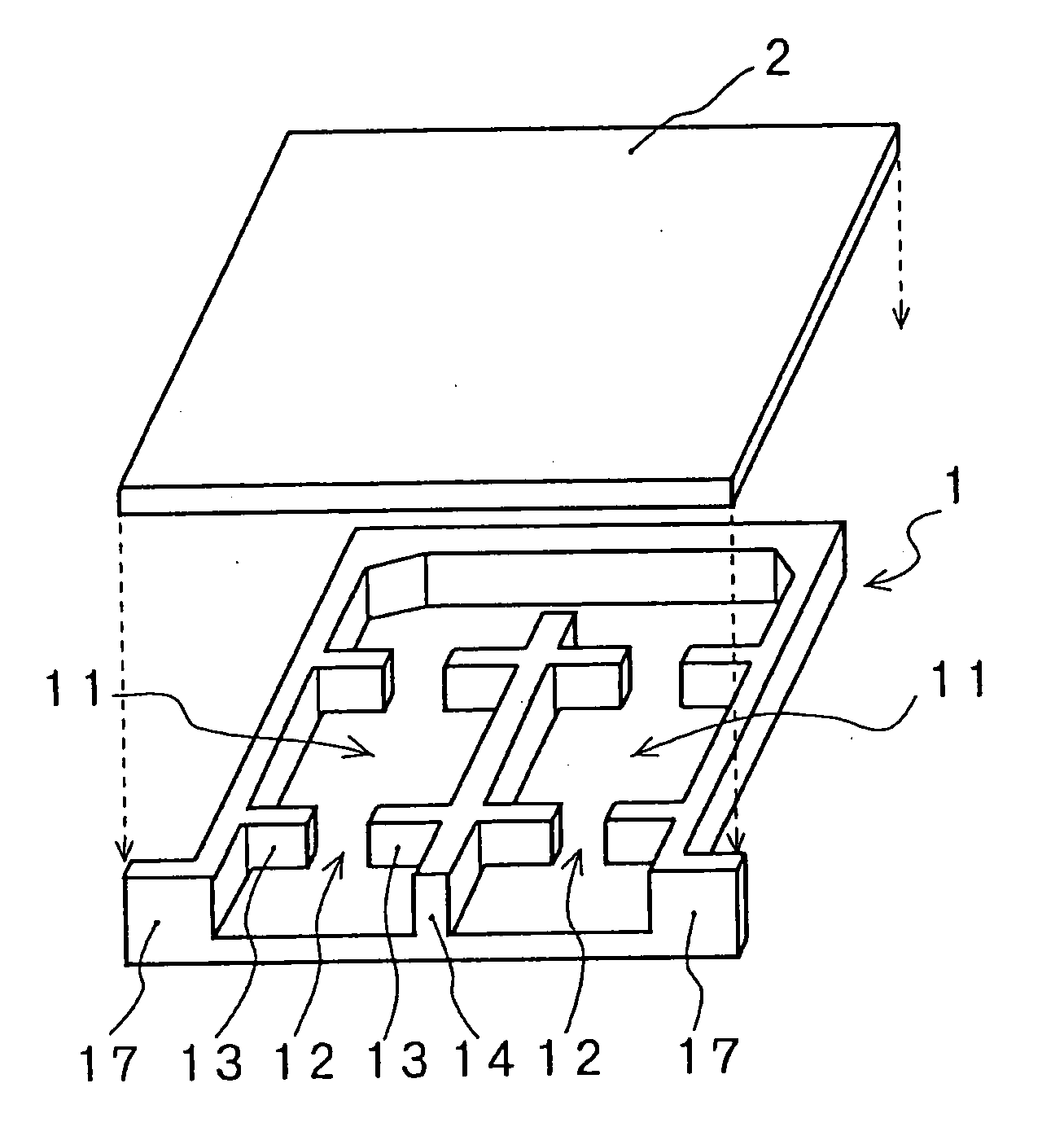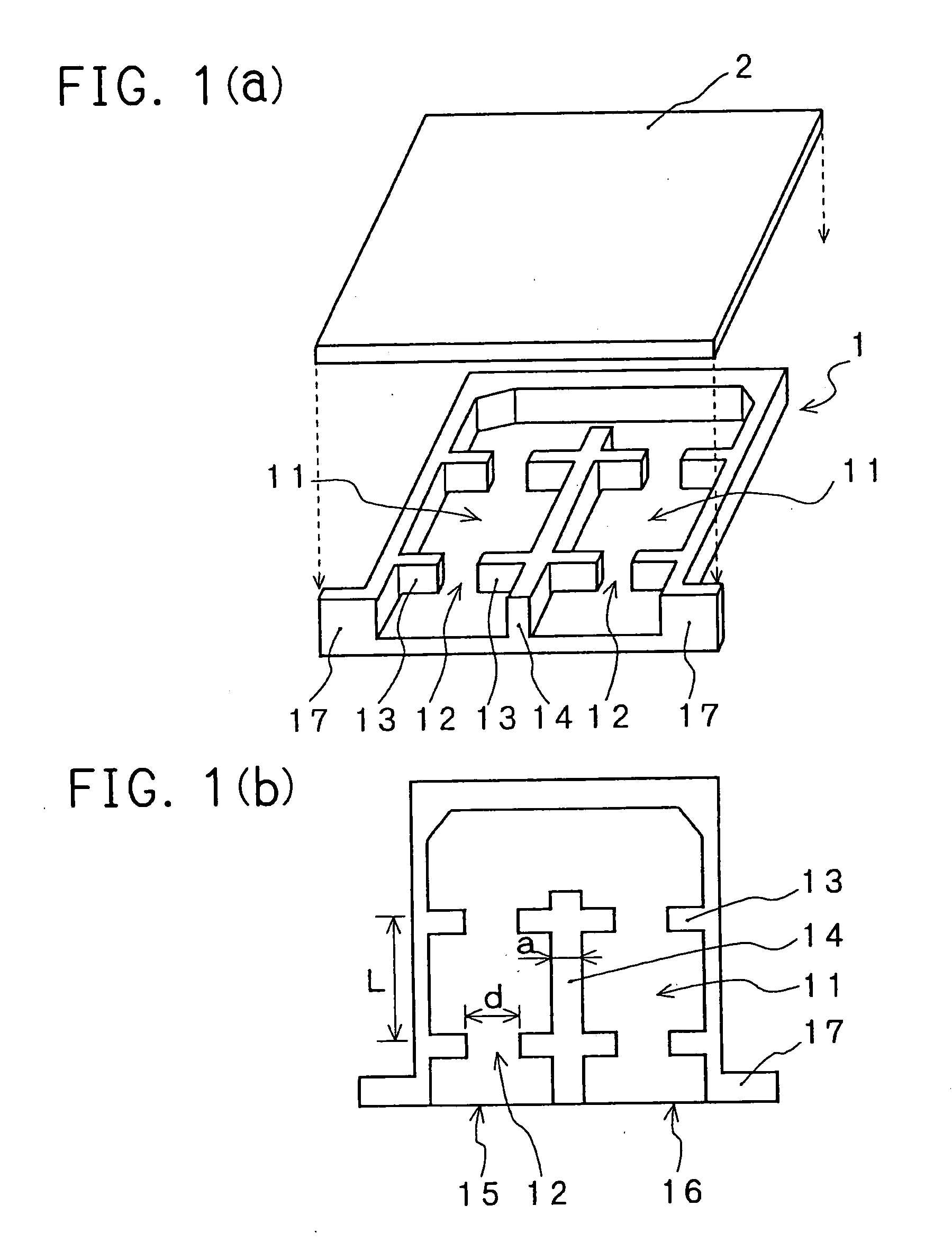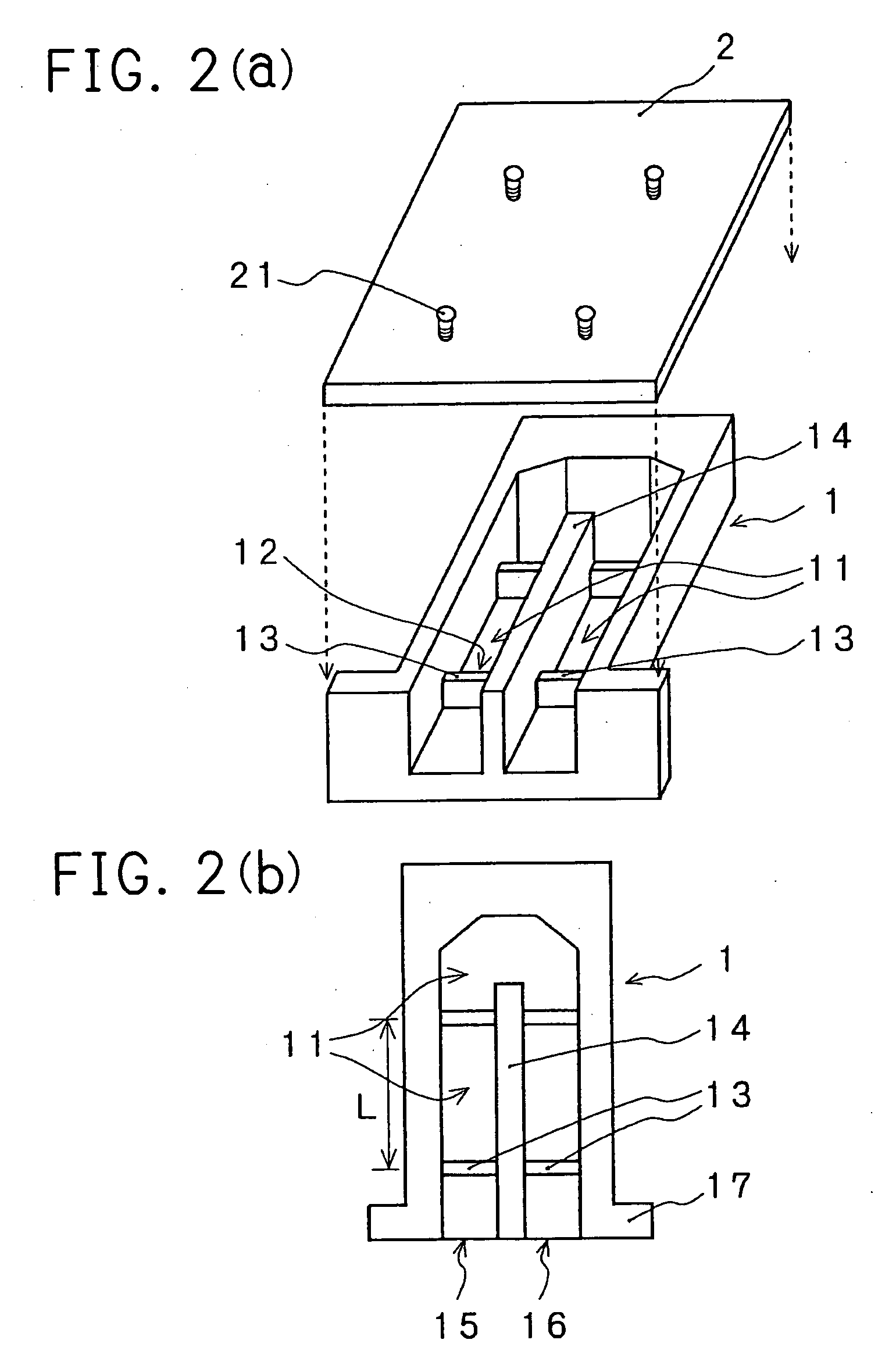Filter
a filter and millimeter wave technology, applied in the field of filters, can solve the problems of deterioration of characteristics by connection, difficult to insert cavity resonators into microwave circuits, and difficulty in modifying the layout of microwave circuits, so as to improve matching characteristics, prevent mutual interference between filters and circuits in series, and prevent the effect of deterioration of characteristics
- Summary
- Abstract
- Description
- Claims
- Application Information
AI Technical Summary
Benefits of technology
Problems solved by technology
Method used
Image
Examples
Embodiment Construction
[0023] The filter of the present invention is illustrated by referring to figures. In FIGS. 1 (a) and (b), there are illustrated an exploded perspective view of one Embodiment of the present invention and a plan view with a cover being removed. A waveguide groove 11 with one surface being open is formed in a U-shape on a body 1, and a plurality of inductive resonant windows is provided at a predetermined interval inside the waveguide groove 11 along a longitudinal direction. A waveguide having the inductive resonant windows 12 is formed by providing a cover 2 on the surface of body 1 as closing the open surface. A cavity, which is enclosed by the two adjacent inductive resonant windows 12 provided along a longitudinal direction of the waveguide 11, body 1 and cover 2, resonates at a predetermined frequency band, and a plurality of inductive resonant windows 12 is provided to pass electromagnetic wave in a predetermined frequency band. An end of the U-shaped waveguide 11 is to be an ...
PUM
 Login to View More
Login to View More Abstract
Description
Claims
Application Information
 Login to View More
Login to View More - R&D
- Intellectual Property
- Life Sciences
- Materials
- Tech Scout
- Unparalleled Data Quality
- Higher Quality Content
- 60% Fewer Hallucinations
Browse by: Latest US Patents, China's latest patents, Technical Efficacy Thesaurus, Application Domain, Technology Topic, Popular Technical Reports.
© 2025 PatSnap. All rights reserved.Legal|Privacy policy|Modern Slavery Act Transparency Statement|Sitemap|About US| Contact US: help@patsnap.com



